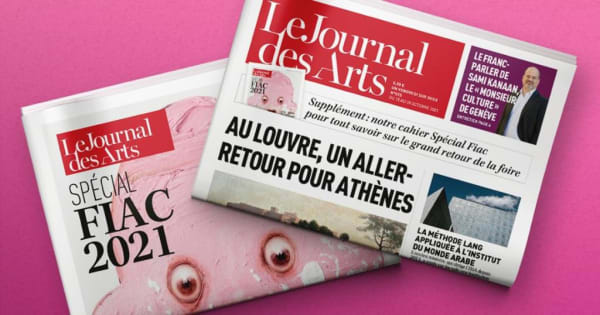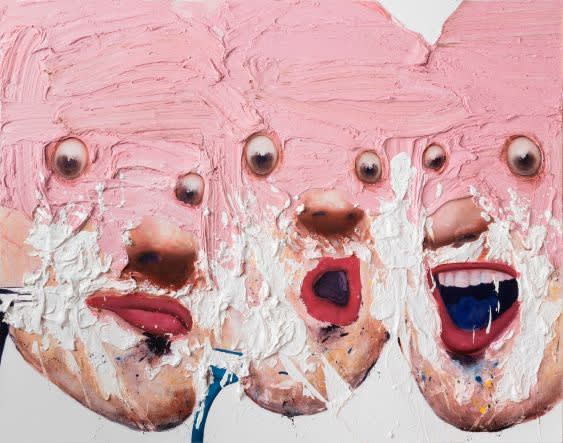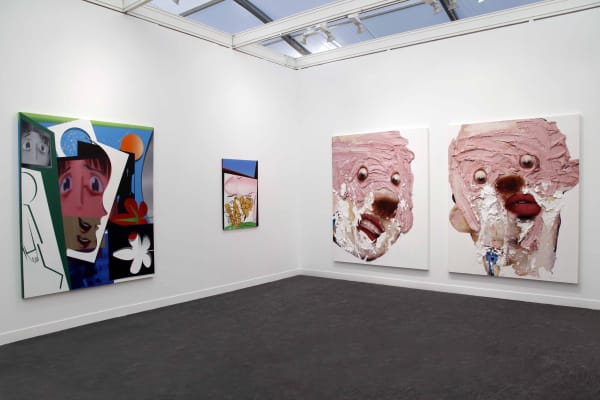FIAC 2021 | Farrokh Mahdavi & Hoda Kashiha: Dastan's Basement
Dastan presents a duo presentation of works by Hoda Kashiha and Farrokh Mahdavi at its booth (F18) at the Paris-based FIAC (Foire Internationale d'Art Contemporain) October 21-24, 2021.
-
 Installation view of Dastan's Basement booth at Fiac 2021.
Installation view of Dastan's Basement booth at Fiac 2021. -
 Installation view of Dastan's Basement booth at Fiac 2021.
Installation view of Dastan's Basement booth at Fiac 2021. -
 Installation view of Dastan's Basement booth at Fiac 2021.
Installation view of Dastan's Basement booth at Fiac 2021. -
 Installation view of Dastan's Basement booth at Fiac 2021.
Installation view of Dastan's Basement booth at Fiac 2021. -
 Installation view of Dastan's Basement booth at Fiac 2021.
Installation view of Dastan's Basement booth at Fiac 2021. -
 Installation view of Dastan's Basement booth at Fiac 2021.
Installation view of Dastan's Basement booth at Fiac 2021.
-

Farrokh Mahdavi on the cover of Le Journal des Arts
Le Journal des Arts November 3, 2021The main page of the special section of Le Journal des Arts on FIAC is adorned with an image of the painting of Farrokh Mahdavi....Read more -

The funny faces of Farrokh Mahdavi at the Dastan Gallery
The Art Newspaper October 22, 2021The Art Newspaper writes on the funny faces of Farrokh Mahdavi at the Grand Palais Éphémère both on occasion of FIAC and Asia Now shows....Read more -

FIAC 2021 Shines in the Shadow of the Eiffel Tower
Galerie Magazine October 21, 2021Paul Laster of Galerie Magazine reports on the 2021 FIAC at the Grand Palais Éphémère in Paris. The 47th edition of the famed art fair...Read more
Dastan's Basement’s booth exhibits a duo presentation of the work of two Iranian artists representative of a vividly dynamic contemporary scene. Questioning identities and the individual while exploring socio-political topics related to their home country, both Hoda Kashiha and Farrokh Mahdavi engage the body through the entanglement of politics and poetics, playing with the lexicology of colours to reflect on our everyday human condition.
In her playful paintings that capture awkward and dark humour moments, Hoda Kashiha (b. 1986, Tehran) reflects on culturally sensitive topics such as identity, femininity and gender issues within the complex climate of her native country. Kashiha’s daily observations of opposition and struggle are transformed into poetic metaphors on canvas resulting in a bold imagery that constantly shifts between reality and imagination. There she uses a common strategy used by Iranians to survive the current social and political system, incorporating for instance pop culture, emojis, manga aesthetics and comic cartoons, mixed with masterpieces taken from art history —Persian miniature, cubism—to create unique images. One of her paintings presented here is predominantly red, and the use of this tone can be seen as an expression of revolution, of danger and of love. On the surface of another work, the artist seems to have used a large Photoshop erasing tool, that she describes as an invisible power that could only be seen through its disappearing footprints. On a further canvas, a deconstructed image deals with separation and duality and expresses the presence of the objects by their shadows or their positive and negative spaces. Hoda Kashiha’s practice is indeed a constant reflection on existence and non-existence, visibility and concealment.
Through his use of unique and recognizable fleshy-pink hue, Farrokh Mahdavi (b. 1970, Tehran, Iran), blurs our relation to representation and identities. The thick layer of pink paint that he affixes to the surface of his canvases seems to gradually erase from the faces he depicts any distinctive type of features, washing off his character’s distinctiveness. When asked about his process, Mahdavi explains that he began his series of portraits —or perhaps self-portraits— the day he realized that grey hair was progressively covering his face. He then decided to start shaving every day as a gesture of revolt against the cruel passing of time, and later kept replicating on his canvases this denial of aging. In popular culture and cinema, the act of shaving has been often associated with emasculation and destruction of one’s identity. The monochromatic pink that dominates in his works emphasizes a bodily relationship to painting. In Farsi moreover ‘soorati’, that also means pink, is named after “soorat,” which refers to “face.” Conveying an expressive and realistic approach of portraiture, he depicts with wry humour and a sometimes grotesque imagery our banal human condition, our daily routines, and the fear of death that accompanies us at every moment. In fact, anxiety and discomfort that are read in the bulging eyes of the characters he portrays and the emotions that they convey appear, ultimately, as the mirrors of ourselves.
Martha Kirszenbaum








